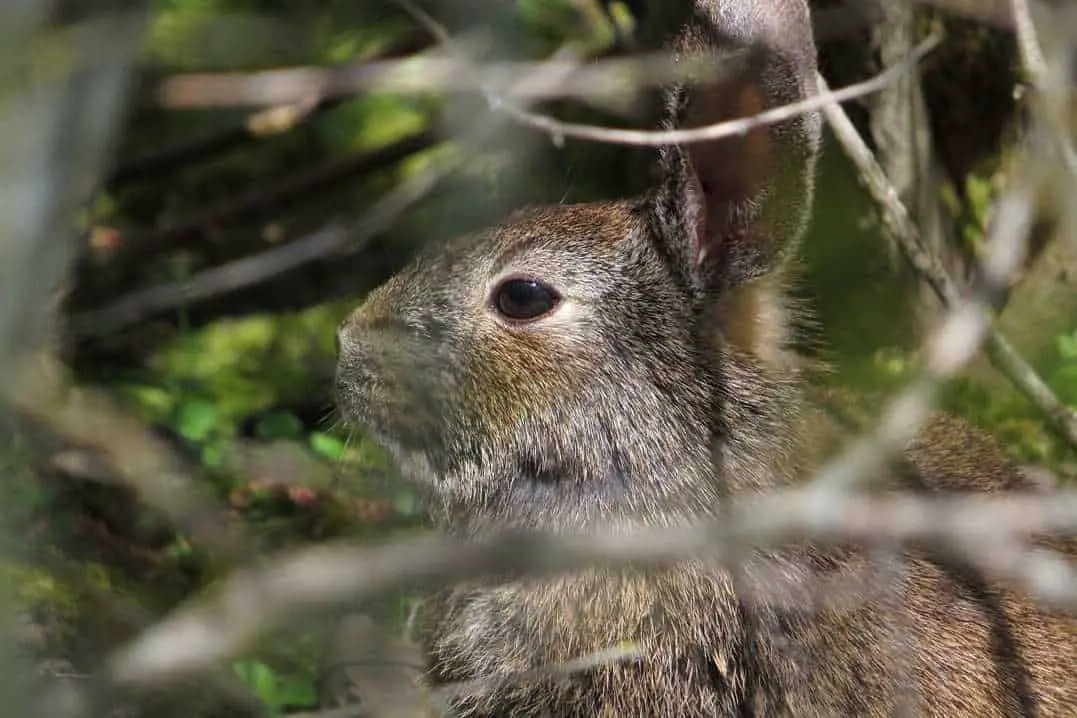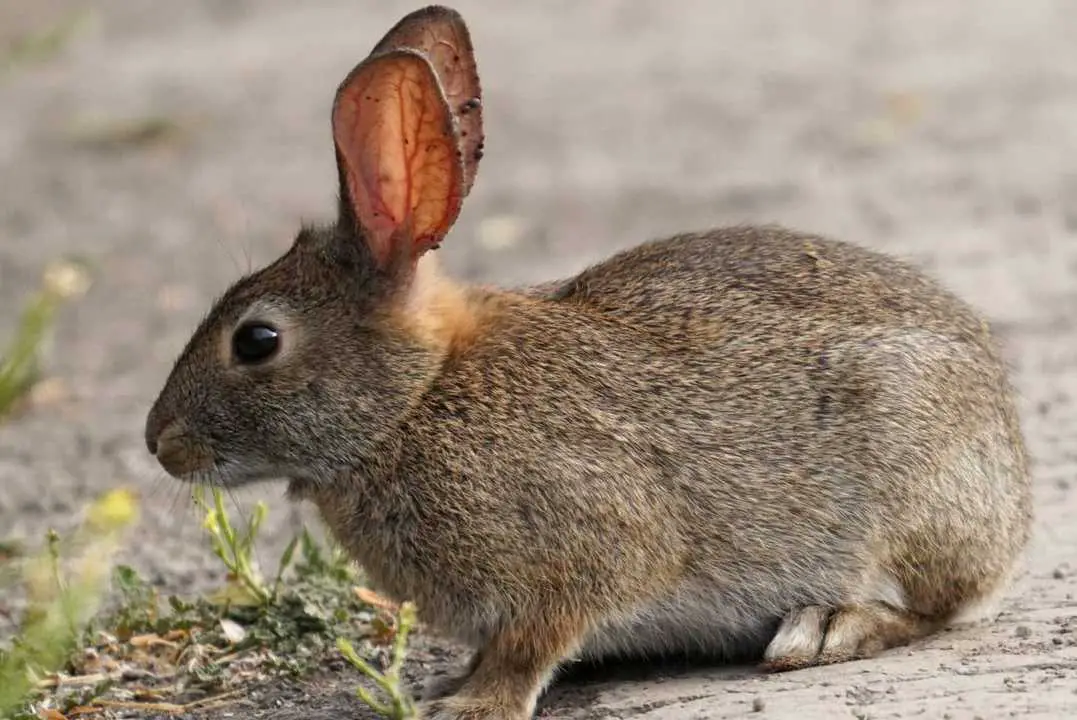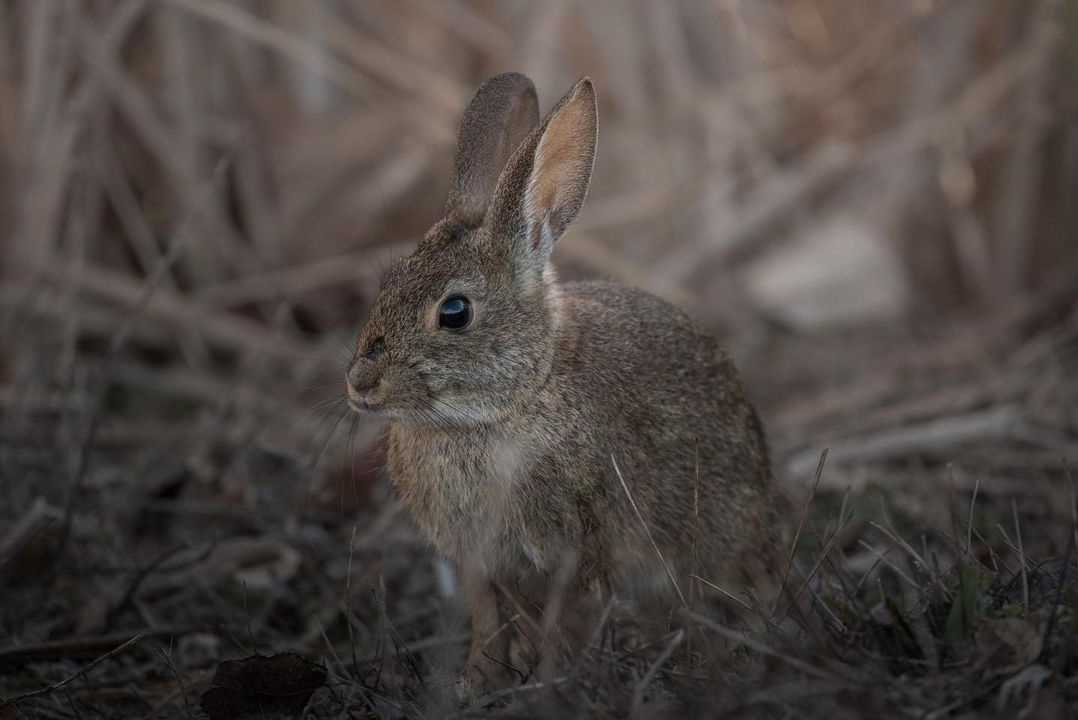If you have a fascination for rabbits, you might think you have seen nearly all of them. However, that might not be the case. Have you met the Brush Rabbit? If you haven’t, now is the perfect time to get to know this wild rabbit!
Where Did Brush Rabbits Come From?
If you have seen a rabbit out in the wild, there’s a possibility that it might be a Brush Rabbit. This species, with the scientific name of Sylvilagus bachmani, belongs to the cottontail rabbit family.
You would probably run into a Brush Rabbit if you are somewhere near the Western coast of the United States. Brush Rabbits can usually be found in the following places:
- Cascad
- California
- Columbia River
- Oregon
- Sierra Nevada
- Mexico (Baja California)
Brush Rabbits live in a dense and chaparral biome. If you aren’t familiar with this environment, it’s usually dry and warm and surrounded by shrubs. This kind of rabbit can also live in a brush or grassland.
The Brush Rabbit has 13 subspecies. For reference, here are the said subspecies:
- Sylvilagus bachmani bachmani
- Sylvilagus bachmani cerrosensis
- Sylvilagus bachmani cinerascens
- Sylvilagus bachmani exiguou
- Sylvilagus bachmani howelli
- Sylvilagus bachmani macrorhinus
- Sylvilagus bachmani mariposae
- Sylvilagus bachmani peninsularis
- Sylvilagus bachmani riparius
- Sylvilagus bachmani rosaphagus
- Sylvilagus bachmani tehamae
- Sylvilagus bachmani ubericolor
- Sylvilagus bachmani virgulti
There are no exact figures or total number of Brush Rabbits in the wild. It seems that conservationists have not included the Brush Rabbit in their list except for one subspecies.
The riparian brush rabbit or Sylvilagus bachmani riparius found in California’s San Joaquin Valley was considered endangered by the US government. The population of the Brush Rabbit might be affected by certain factors like wildfire and natural habitat loss.
Brush Rabbit Info Chart
Since there are a lot of cottontail rabbits out there, it wouldn’t hurt to get to know the Brush Rabbit a little better. With this information, it would be easier for you to identify them and to know them a little better.
| Size | Small To Medium |
| Weight | 0.5-0.9 kg |
| Color | Brown, Black, Orange, Steel Gray |
| Lifespan | Two Years |
| Temperament | Shy, Reserved, Not Friendly, |
| Rarity | Rare |
| Similar Breeds | Eastern Cottontail, Desert Cottontail |
| Best For: | Sports, Food |
How Do Brush Rabbits Look?
Compared to other rabbit species, the Brush Rabbit is smaller in size. Apart from their size, their legs, ears, and tails are also short. The Brush Rabbits also have brown, black, or gray furs.
Some Brush rabbits even have orange coverings. Female Brush Rabbits tend to be bigger than their male counterparts. With that said, don’t be surprised if you see the doe is larger than the buck.
There are also other distinguishing marks that you can find on the Brush Rabbit. Their tails and bellies are usually gray. Their tails are also usually dark in color. However, if you check what’s beneath their tails, you will find something white.
What Are They Like?
Different rabbit species tend to have different personalities as well. There are a couple of things you should be familiar with, especially when it comes to Brush Rabbits. Knowing what Brush Rabbits are like in the wild would help you understand the kind of rabbits they are.
Since they are wild rabbits, don’t expect them to be chummy and friendly. The Brush Rabbits are shy. However, when it’s time to forage, they are sociable. They don’t mind having company while they search for food. While they can bond with others, Brush Rabbits don’t mind being left by themselves. They can be left alone and to their own devices.
You can categorize this kind of rabbit as crepuscular. They tend to be active during dusk, dawn, or both. There might be times when the Brush Rabbits would come out of hiding in the afternoon.
Just like other rabbits, Brush Rabbits live in burrows. They also live in runways and tunnels. These would usually be found in the rabbit’s home range. There’s usually a difference in the home ranges of male and female Brush Rabbits. Males tend to cover more than females.
Brush Rabbits have various responses when they sense that something is going to happen. If they feel like something is out to run after them, Brush Rabbits can move as fast as 25 miles per hour.
They can climb shrubs and trees to escape. Brush Rabbits also can freeze for an extended period. If there’s a predator around, they can pretend to be frozen and not move at all.
If you hear the Brush Rabbit make sounds similar to crying or squealing, they might be in distress or pain.
What’s Their Diet?
If the Brush Rabbit wants to survive in the wild, it has to forage for food. Brush Rabbits have to get out of their burrows to search for food . If they don’t do anything, they might find themselves starved.
Brush rabbits are herbivores. Their main diet consists of grasses. However, they also consume scrubs, leaves, forbs, and others. With that said, it’s safe to refer to Brush Rabbits as folivores.
One of the most interesting things about the Brush Rabbit’s is that they change their diets according to the seasons. Green Clover is one of the Brush Rabbit’s favorite foods during the summer season. They also love munching on berries. And don’t be shocked to see them eating crops from the gardens and farms.
During the winter, the Brush Rabbits have to adjust their diets. Since there aren’t a lot of green, leafy things to eat, they would look for twigs, shrubs, twigs, and whatever they can find.
Brush Rabbits are also known to eat their poop. Yes, Brush Rabbits want to make sure that they get the right amount of nutrients. Brush Rabbits would expel soft pellets and ingest them again. This process is called coprophagy. And it’s something that almost all rabbits do.
How Do Brush Rabbits Breed?
Monogamy is probably a foreign concept for Brush Rabbits. This rabbit breed practices polygyny. A male Brush Rabbit can reproduce with multiple female Brush rabbits. With this practice, it’s normal for Brush rabbits to have numerous litters. Compared to other Rabbit genera, the Brush Rabbits do not produce as many offspring.
In California, Brush Rabbits start their breeding season in December. It extends up to May or June. The breeding season falls on different months for Brush Rabbits found in Oregon. Theirs are from February to August.
When female Brush Rabbits get pregnant, it doesn’t take long for them to give birth. The gestation period is only 27 days. A birth would usually result in 2 to 4 kittens in the litter. After birth, the kittens should not be left all alone. They stay in the nest for about a fortnight.
The female Brush Rabbits would feed their kittens at night. It takes about four to five months for the baby rabbits to mature. As soon as they are ready, these young Brush Rabbits will be joining the breeding season.
Do They Have Any Health Issues?
Myxomatosis
This condition does not affect the Brush Rabbit’s health directly. However, they play a role in its spread. Myxoma virus is a pox virus that causes Myxomatosis. The Brush Rabbit is known to be a carrier of the Myxoma Virus. They are immune to this virus which affects other rabbits fatally. The virus also does not affect other animal species.
One of the most prominent ways of transmitting the Myxoma virus from a Brush Rabbit is through a mosquito. When a mosquito comes in contact with a Brush Rabbit that happens to carry the virus, it can transmit it to other rabbits.
When the virus infects a rabbit, it might be dangerous and deadly. The rabbit might experience the following:
- Eye and nose discharges
- Swelling in areas like the base of the genitals, eyelids, and ears
- High temperatures
These are the main signs that the rabbit has been infected with the Myxoma virus. There are times when the rabbits die even before they can exhibit any symptoms at all. There are currently no vaccines or medications for this infection. A rabbit suffering from this condition has a high probability of dying.
Rabbit Hemorrhagic Disease Virus Serotype 2 (RHDV2)
There has been a viral disease plaguing the Brush Rabbit population in California. This fatal virus has deeply affected Riparian Brush Rabbits in the area.
The Rabbit Hemorrhagic Disease Virus Serotype 2 (RHDV2) first came from France. However, over the years, it has made its way to the United States where it has infected Brush Rabbits. Once a rabbit is infected, the following symptoms will appear:
- Breathing difficulties
- Lack of Appetite
- Lethargy
- Fever
- Blood Frothing From Nose
When the Brush Rabbit gets infected with RHDV2, it’s only a matter of time before they face death. The numerous deaths of Brush Rabbits have been alarming authorities. In 2020, experts tested a vaccine against the virus on wild Brush Rabbits. Since the tests yielded positive feedback, authorities worked on vaccinating the Brush Rabbits to protect them from this lethal disease.
Who Threatens The Brush Rabbit?
Apart from potential health threats, other factors affect the lives and safety of the Brush Rabbit. Since they are mostly found in the wild, they encounter a lot of predators like the following:
- Gray Foxes
- Snakes
- Bobcats
- Weasels
- Coyotoes
- Raptors
- Minks
- Weasels
If the Brush Rabbits want to survive and live longer, they must know how to escape those preying on them. The bodies of the Brush Rabbits have evolved to help them get away from these dangerous aggressors.
The Brush Rabbit’s short tail and body allows them to move fast. If a predator chases them, they can run as fast as possible and hide in tunnels and burrows. If there are trees nearby, they might even climb one to protect themselves.
Can You Keep A Brush Rabbit At Home?
Since the Brush Rabbit considers the wild as its home, it’s not recommended that you keep one at home. In some places, like California, where Brush Rabbits are found, it is illegal to keep wild animals. You should probably know the laws and regulations regarding keeping wild animals at home.
If you come across a Brush Rabbit, what should you do? Well, if the Brush Rabbit is young or injured, it might need some help or assistance. It’s best if you don’t take matters into your own hands. You can reach out to a veterinarian or the Department of Fish and Wildlife. It’s best to leave it to professionals who know what to do.
Wild Rabbits like the Brush Rabbit are hard to tame. When they are more mature, it would be difficult to train them to be domestic. It’s not in their nature at all.
It’s also not advisable to take a baby rabbit from its mother. Both rabbits will suffer. The baby Brush Rabbit needs the mother’s milk. If they aren’t getting the right nutrients, they might not grow as well as they should.
Brush Rabbits might also bring infectious viruses and diseases that can harm people or other animals. If ever you bring a baby Brush Rabbit home, make sure that they have gotten their vaccinations.
Don’t expect your domestic rabbits and the Brush Rabbits to be instant friends. Just because they are both rabbits does not mean they can bond well. They still have their differences. And due to these, they might not be able to live together in peace and harmony and cause each other stress. When the rabbits are in distress, it can lead to issues that can affect their health and well-being.
Brush Rabbit: A Rabbit Species You Should Get To Know
It’s no surprise that some people are more familiar with domestic rabbits. However, it doesn’t hurt to shine the spotlight on species from the wild like the Brush Rabbit once in a while. Brush Rabbits are also pretty interesting creatures who deserve to be introduced to more people!






